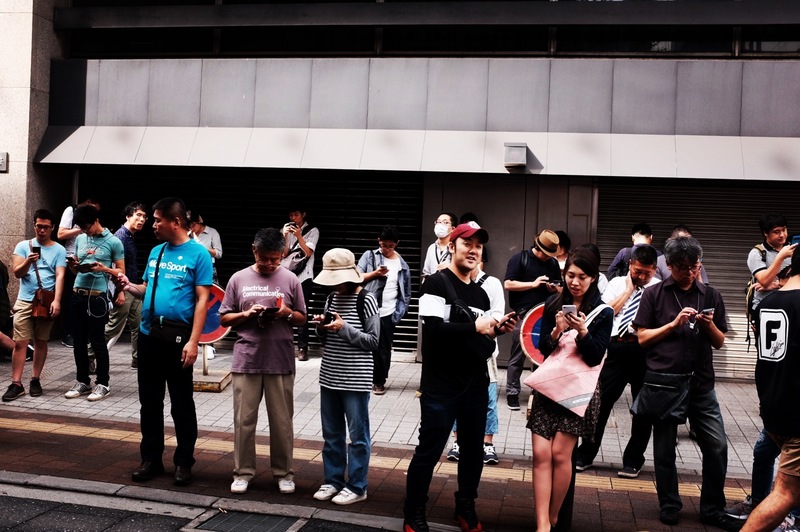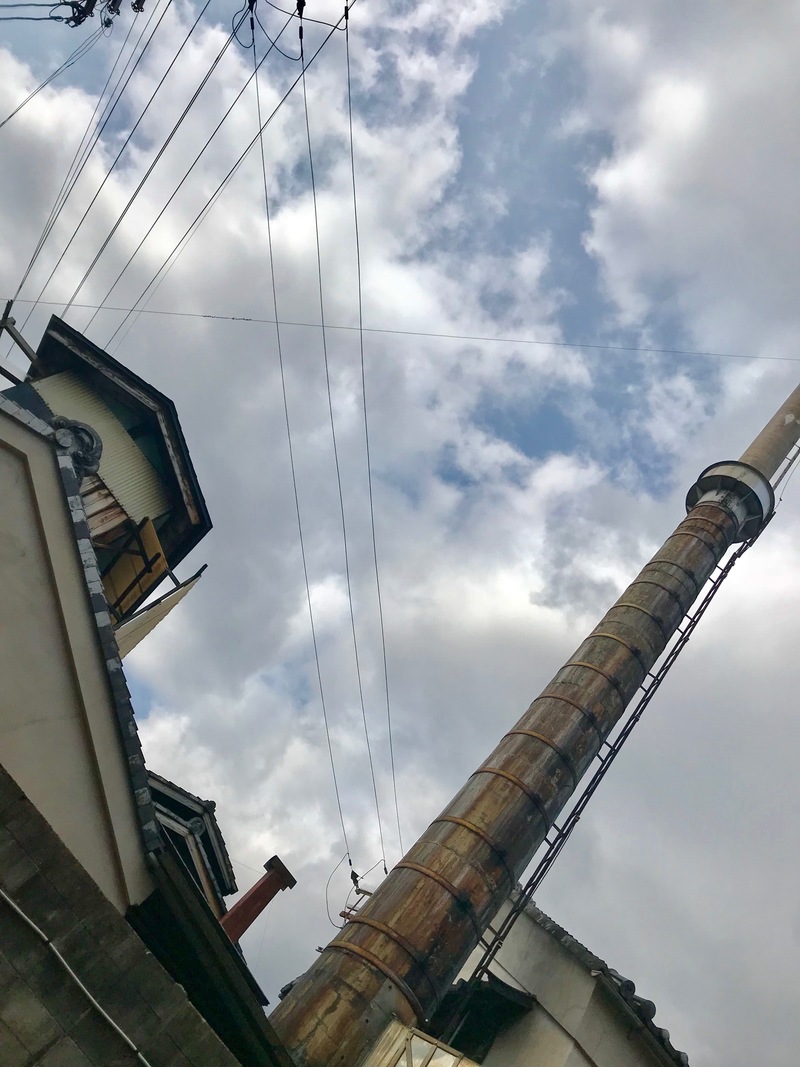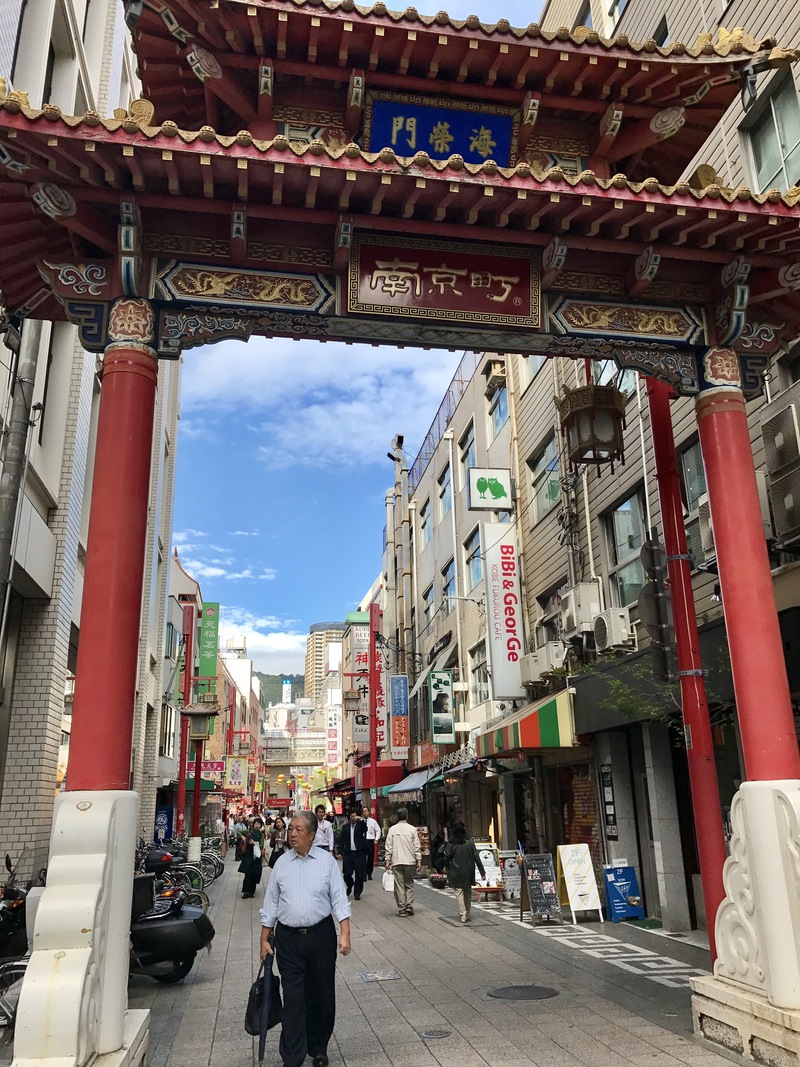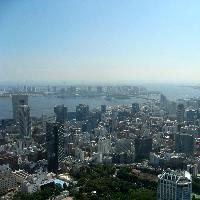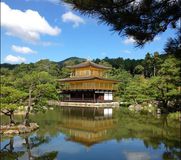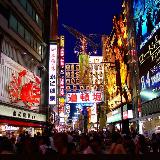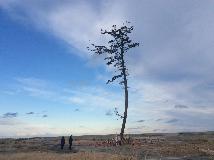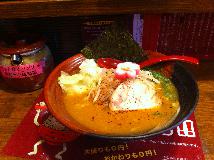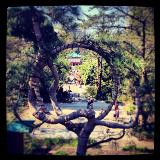By Thomas Baudinette and Martin Chenhall
Recorded by Richard Chenhall
Wed Jun 18 2014
Since the early 20th Century, school lunches (known as kyuushoku) have become a daily tradition in Japanese elementary and junior high schools. They usually consist of a bread roll, a carton or bottle of milk and an inexpensive dish containing protein (such as a fried fish) and increasingly, since the 1980s, rice, soup and popular dishes such as Japanese curry or rissoles called "hanbaagu" (also known as Hamburg steak). A picture of a typical school lunch is found below. According to a survey conducted by the Ministry of Education, Culture, Sports, Science and Technology (MEXT) conducted in 2004, almost 99% of elementary school students and 82% of junior high school students eat school lunches each school day.
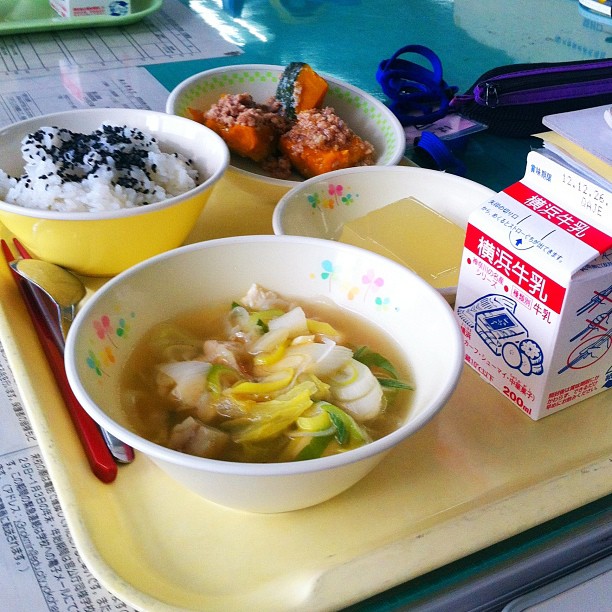
A typical school lunch
A number of social rituals have developed around the serving and eating of these school lunches- rituals which have their roots in the private sphere of the family meal. In the following recordings, we explore the sonic practices and soundscapes of an elementary school classroom during lunch time.
This recording was made whilst the students were going into the corridor in order to retrieve their school lunches (kyuushoku) from containers outside. When the kids get their school lunches from the container room they are getting it in metal boxes, they take these to the classrooms then distribute the food onto plates once in the classroom. There is one big container for soup, one for salad, one for the main course and one for rice. There are two for bowls and plates and one plastic container for glass milk bottles. Some days there is bread or noodles instead of rice. The kids are very noisy and it is difficult to distinguish what each student is saying. At 0:06 one child addresses the teacher “Hello!” and the teacher replies (at 0:07) with “Hello.” Throughout the middle of the recording you can hear rustling and the children’s excited chatter. At approximately 0:30 a young boy, who has received his lunch container exclaims “itadakima~su (thanks for the food),” extending the final syllable out.
Click to Play Sound: Before School lunch
[DRAFT] At the beginning of the recording, one child calls out at 0:01, “gohan nai hito? (is there anyone who doesn't have their meal?).” This student is one of the children who have been put in charge of lunch. The kyushoku is brought in metal containers from the container room, and children in charge of the lunch then dish out the respective meal items onto plastic plates and bowls. You can hear this in the previous recording and in the beginning of this recording. Usually, lunch contains one bowl for rice, one bowl for soup and one plate, divided in half, one side for salad (or vegetables) with a some kind of main item put on the other side (such as chicken, hamburger, fish or Chinese dumplings). Children also receive a bottle of milk (at my school they are bottles, not cartons) (NB: This is slightly different to the picture above). At 0:13 you can hear a tapping sound. This is the sound of the children removing excess food from metal and plastic serving utensils. The following can be heard. These utterances are made at the start of each meal. Teacher: Sore de wa (Okay, let's begin) Boy: Shizuka ni shite kudasai! (Please be quiet!) Kids: Hai~! (Yes~!) Boy: Tsukue no ue ni subete no mono ga arimasu ka? (Do you have everything on your desks?) Kids: Arimasu! (Yes, we have it!) Boy: Jaa, te o awasemashou (Okay then, let's put our hands together). [claps] Itadakimasu! (Thanks for the food!) Everyone (including teacher): [claps] Itadakimasu! (Thanks for the food!) I didn't record an example but the children in charge of making these announcements will also read a menu page prepared by the kyushoku centre. It will detail the day's lunch and some kind of study item, often with a quiz, pertaining to the school lunch ingredients.
Click to Play Sound: Finishing lunch at School
The above recording contains the post lunch announcements. At the beginning of the conversation you can hear snippets of the children's lunchtime conversations, with one student exclaiming "Kinkotsu ja (It's meat and bones)" in relation to his lunch (although it is difficult to determine if he is happy or disappointed!) Boy: Jaa, te o awasemashou (Okay then, let's put our hands together!). [claps] Gochisousama deshita! (What a great meal!) Kids: [claps] Gochisousama deshita! (What a great meal!) Teacher: [slight delay] Gochisousama deshita (What a great meal!) It should be noted that the phrases itadakimasu and gochisousama deshita heard in these recordings are "set phrases" commonly used during meal times. They are comparable, to a certain degree, to the English practice of saying grace before beginning a meal, as they show gratitude to those who have prepared the meal for you. After the students say "gochisousama deshita," they will brush their teeth, take the containers back to the container room and move their chairs and tables to the back of the room in preparation for cleaning, all before they go out to play during their recreation break. RECORDINGS: Martin Chenhall TEXT: Thomas Baudinette and Martin Chenhall (in italics, except when transcriptions of Japanese) Picture: Used under non-commercial Crearive Commons license, share and share alike, with no modifications to original content, attribution to original creator : Vincent Van den Storme
